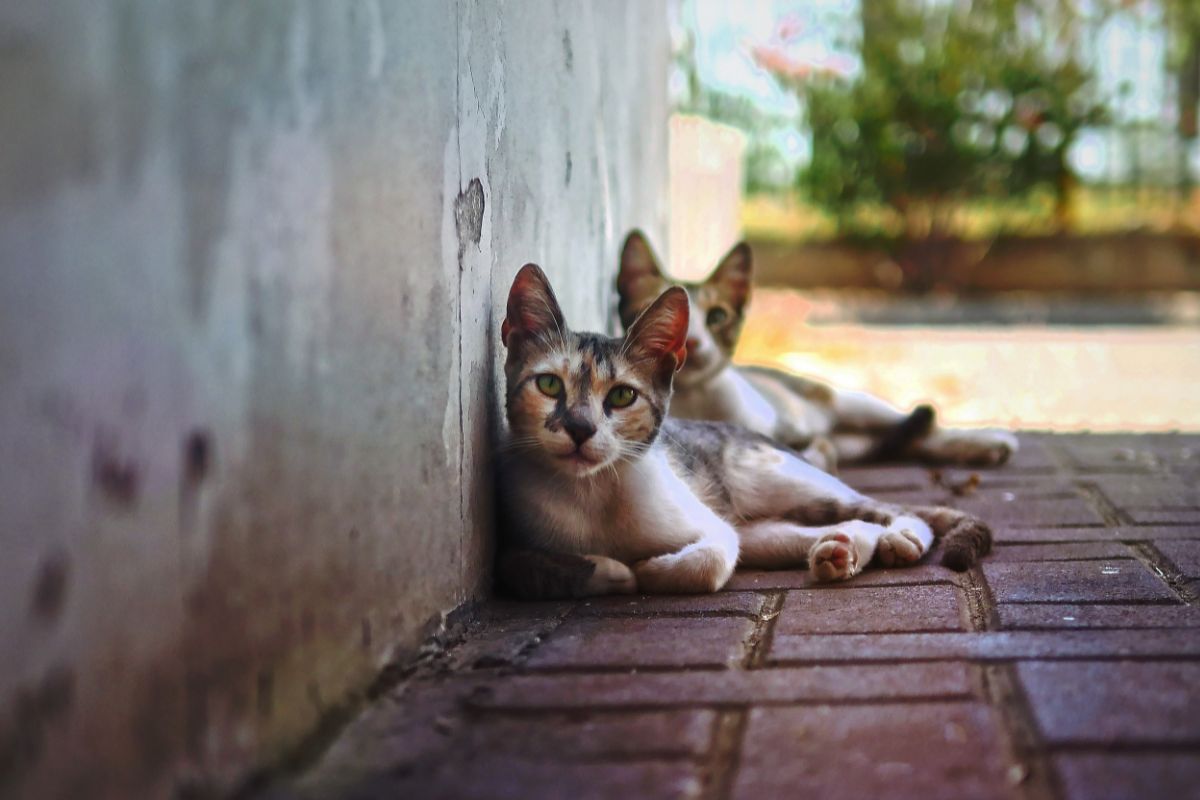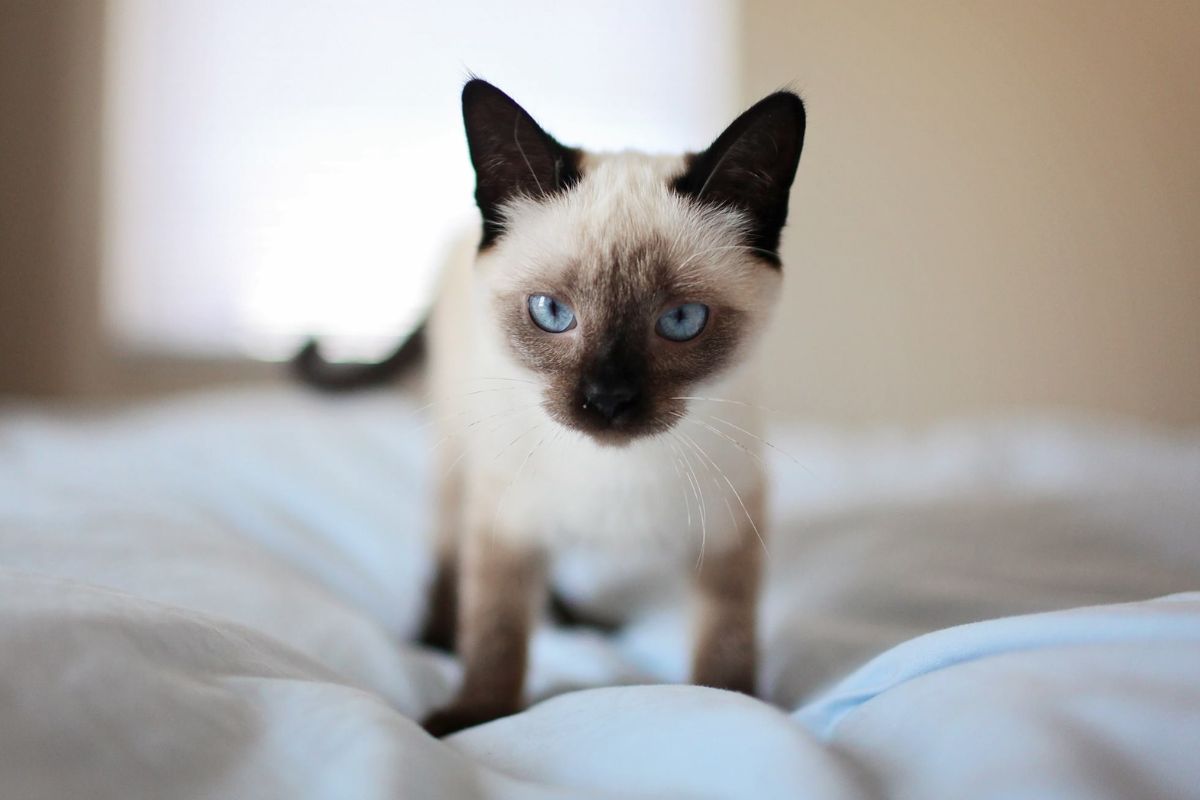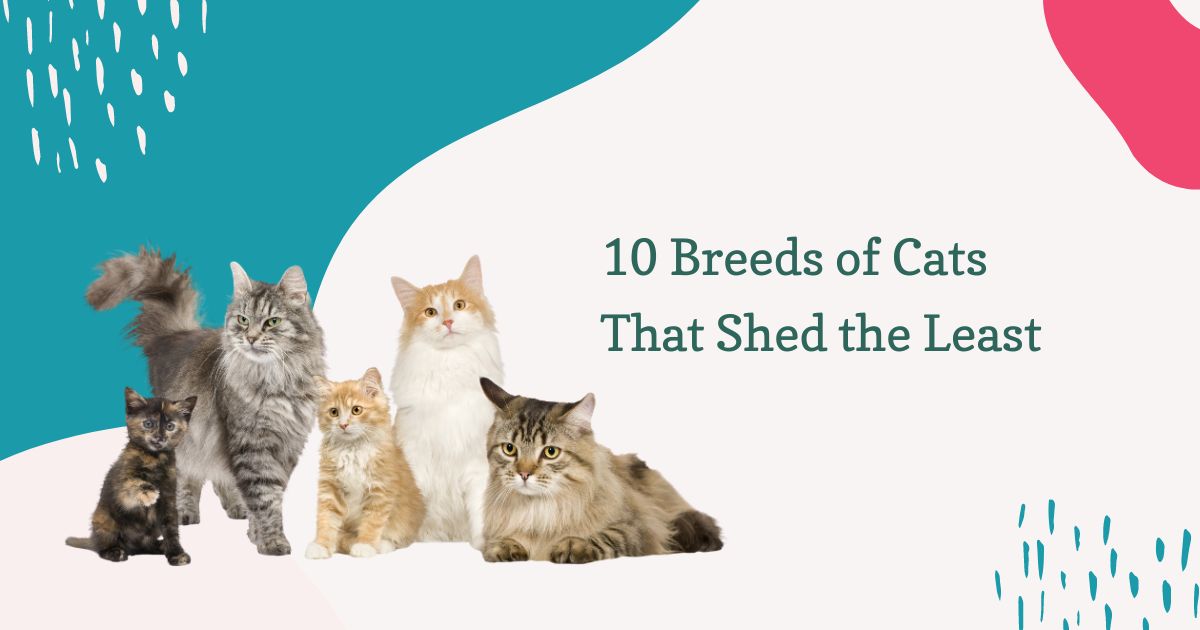Are There Cats That Don’t Shed?
Do you love cats that shed the least? Our beloved feline companions bring us immense joy, but they can also leave behind a substantial fur cleanup task. However, finding non-shedding cats is challenging, as all cats naturally shed.
Explore our selection of charming cats that shed the least to help you keep your living space tidier and more comfortable.

10 Breeds of Cats That Shed the Least
- Bengal Cats
Bengal cats are popular for their distinctive appearance, including a coat covered in spots or rosettes resembling a leopard or ocelot. They are highly active and intelligent cats, often requiring mental and physical stimulation. Bengals love water and may play in sinks or even join you in the shower.
Additionally, they are low-shedding cats, making them a popular choice for those who prefer a cleaner home. While they don’t require extensive grooming, occasional brushing can help keep their coat in top condition.
- Cornish Rex Cats
Cornish Rex cats have wavy coats, slender bodies, and large ears. They are affectionate and enjoy being the center of attention.
Due to the lack of a protective outer coat, they tend to be sensitive to temperature changes and may seek warmth from their human companions. Thanks to their unique coat, they are among the cat breeds that shed the least. Regular brushing is unnecessary, but they may appreciate the extra attention and warmth during grooming sessions.
- Devon Rex Cats
Devon Rex cats are playful and mischievous, making them excellent family companions. In addition to their short, wavy fur, they have large ears and distinct facial features. Despite their unique appearance, they have a gentle and loving nature. Their shedding is minimal, and you won’t find tufts of fur around your home.
Their grooming is straightforward, with occasional petting and light brushing sufficient to maintain their coat’s health.
- Donskoy Cats
Donskoy cats, also known as Don Sphynx, are hairless cats with a striking and wrinkled appearance. Their hairlessness makes them susceptible to temperature fluctuations, so they often require extra care to maintain their skin health.
Donskoy cats do not shed traditionally because they are cats with no fur. They have specific grooming needs related to skin care. Regular cleaning and occasional baths are essential to keep their skin healthy and comfortable.
- Kurilian Bobtail Cats
Kurilian Bobtail cats are recognizable by their short, bobbed tails and sturdy build. They are intelligent and quick learners, which makes them responsive to training. These cats are adventurous and enjoy exploring their surroundings, making them a good choice for families with active lifestyles.
Kurilian Bobtail cats are low-shedding, and their coat is not prone to tangling. Regular brushing can help keep their fur in optimal condition.
- LaPerm Cats
LaPerm cats get their name from their distinctive curly fur, which is soft to the touch. They have small to medium-sized bodies and expressive eyes. LaPerms are playful and affectionate, often forming strong bonds with their human caregivers.
LaPerm cats are minimal shedders, and their curly coat is relatively low-maintenance. Occasional brushing helps prevent matting, but their unique fur texture requires less grooming than other breeds.

- Peterbald Cats
Peterbald cats come in various coat types, including hairless and short-haired varieties. They are an elegant and rare breed known for their sleek appearance. Peterbalds are sociable and enjoy being around people, making them great companions for those seeking an affectionate cat.
Peterbald cats may be non-shedding or have minimal shedding depending on the specific coat type. Hairless varieties require special attention to their skin, while short-haired Peterbalds need only occasional grooming to maintain their coat’s health.
- Siberian Cats
Siberian cats are large, with long, thick fur designed to protect them in cold climates. Despite their imposing size, they are gentle and have a calm temperament. Some consider Siberians hypoallergenic due to lower protein levels responsible for their saliva and skin allergies.
While Siberian cats have a thick coat, they are surprisingly low-shedding for a long-haired breed. Regular brushing, especially during the shedding seasons of spring and fall, can help manage their minimal shedding.
- Siamese Cats
Siamese cats have striking blue almond-shaped eyes and distinctive color points on their ears, face, paws, and tail.
They are affectionate and thrive on human companionship. Their short fur is easy to maintain. Occasional brushing or using damp hands to remove loose hair is typically sufficient to keep their coat looking its best.

- Singapura Cats
Singapura cats are the smallest domesticated cat breed characterized by their small size and large, expressive eyes. They are active and playful, often behaving like perpetual kittens.
Singapura cats are affectionate despite their energy and enjoy cuddling with their owners. Their short fur is easy to manage, and they are low-shedding. They may appreciate regular brushing as part of their bonding time with their owners.
With minimal shedding tendencies, these cat breeds are great choices for individuals or families looking for feline companions that require less grooming and result in fewer stray hairs around the house.
Do Cats Shed Less Than Dogs?
The shedding of both cats and dogs varies widely depending on the breed. While it’s not universally true that cats shed less than dogs, some cat breeds tend to shed less than certain dog breeds. Factors such as coat type, length, and breed genetics significantly determine shedding levels.
Some cat breeds, such as the Siberian, Singapura, and Siamese, are minimal shedders. These breeds often have shorter hair or hair that doesn’t mat easily. However, it’s important to note that even these low-shedding cat breeds may still shed some hair.
On the other hand, some dog breeds are also known for minimal shedding, often referred to as “hypoallergenic” breeds. Breeds like Poodles, Bichon Frises, and Maltese have hair instead of fur and shed very little, making them more suitable for individuals with allergies or who prefer a cleaner home.
Ultimately, whether a cat or a dog sheds less depends on the specific breed and individual characteristics. Researching and choosing a pet that matches your shedding tolerance and lifestyle is essential. Regular grooming and proper care can also help manage shedding in cats and dogs.
Do All Cats Shed?
Shedding is a natural process in which cats shed old or damaged hair to make way for new growth. However, the amount of shedding can vary significantly from one cat to another, depending on factors like breed, age, health, and season.
Some cat breeds shed very little, while others may shed more frequently and have heavier fur coats. Regular grooming can help manage shedding and reduce the amount of loose fur in a cat’s environment.
Key Takeaways
We adore cats, yet their hair can pose challenges. While cuddling your kitten is delightful, it’s their company you desire on your lap, not their shedding fur. Managing pet hair in your home and navigating grooming demands can be cumbersome. Allergic reactions often revolve around the focus on furry companions.
However, you should blame sensitivities on Fel d 1, a protein in cats’ skin, dander, and saliva. Hypoallergenic cats and cats with no fur produce fewer allergens, making them an ideal choice for allergy sufferers. You should always consider exploring breeds with minimal fur fallout for simplicity, allergies, or preference.

